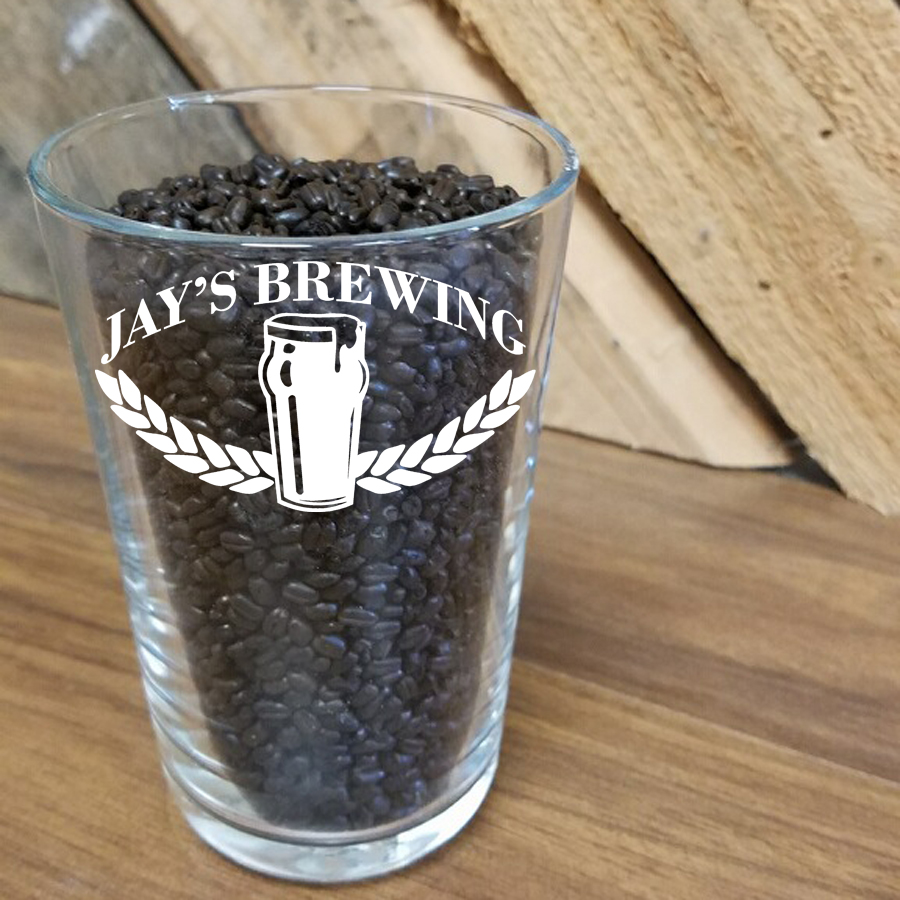There is no reason why your beer can’t be clear when you pour it into your glass. While clarity does not affect the taste of the beer, some homebrewers feel that appearance is half the battle. Here are a few tricks that will help your beer clear up.
Irish Moss
This is an adjunct added at the end of the boil (last 15min). Take a pinch of it and add. The way that it works is, it helps coagulate proteins to the bottom. Proteins add to the haze of a beer. This does not change the flavor profile of the beer.
Fining Agents (Gelatin)
This is one of my favorites that I use. You add it into the secondary fermentation and it will literally drag down tannin, proteins, yeast, making the beer clear. Do not add this in while the fermentation process is ongoing. The reason is that it will attach itself to the yeast and make it fall out as well.
Chill Wort Quickly
Ice bath, immersion chiller, counter flow, there is a ton of techniques. Which ever one you chose, if you end up cooling down your wort quickly it helps the tannin’s and the proteins to cool down quickly and essentially dropping out. By doing this you make your beer clearer.
Lager Your Beer
Any strain of yeast can be lagered – ale yeast or lager yeast. By letting the fermentation finish and then bringing it down in temperature, yeast as well as tannin’s will fall out of the beer making it more clear. If you are bottling you will want to do this after the beer has been bottled if using an ale yeast. If you don’t the beer will not carbonate properly.
Use Grain With Less Protein
Certain grains that are used for steeping or in all-grain are going to naturally give you more haze. Anything that says, “flaked” you can bet that you will have a cloudier beer. Wheat malt is another one that normally will give you a cloudy beer. At the end if you are trying to make a clear beer, I would avoid using as many high protein grains as possible.
Secondary Fermentation
We wrote a pretty good blog about them but, secondary fermentation can help as well. I find that better bottles do a better job when it comes to help clarifying then the glass do (I’m sure there are people who would call me crazy for saying that). More can be elaborated about them but pretty much the gist is, the yeast will hit the sides of the better bottle and with its design it helps make the beer less cloudy because yeast will fall out.
Yeast Choice
You want to look at the flocculation of the yeast strand. Flocculation refers to the yeast characteristic of falling out once the fermentation is complete. The higher the flocculation rate, the clearer your beer should be. Chose a high flocculation strand of yeast if you want a clear beer. WYEAST & White Labs both have charts about the flocculation of the yeast which they sell.
What I do…
I usually end up just putting my beer into secondary fermentation and adding gelatin to it. It works every time for me, and it’s kinda cool. You can actually see the beer start to become more clear as the days go by.
If you know of any that I missed or have a technique worth sharing tell us about it!



November 30, 2011 at 9:40 pm
how much gelatin for a 5 gallon batch? Do you simply pour it in the secondary and then rack or mix it in?
Great website/blog! Dynamite info.
November 30, 2011 at 10:14 pm
Thanks for the compliments as well as reading our blog.
To answer your question, if you have a scale it’s 1.5 grams per 5 gallons or 1 teaspoon per 5 gallons. Naturally the 1.5 grams is more exact. Personally, I just measure out the gelatin by the teaspoon. I heat up some water in the microwave so it’s warm to touch then add the gelatin to the luke warm water (about a dixie cup amount of water). Also add it in the secondary fermenter. You want to add it after the FG has been hit. If you don’t measure the FG then do it when the air lock has slowed down the point where you figure it’s done. You can just pour it in and it will do it’s thing, no need to stir or mix. If you feel incline you can rock the fermenter back and forth for a quick swish but I don’t even do that. After 5 days your beer will be pretty clear. By the time you drink your beer after adding gelatin you should be able to read the time off your watch – it’s that clear. We sell it, most homebrew shops do. I can tell you that it’s the same thing you can get a grocery store though; just get the non flavored stuff. If you have your doubts though home brew shops have it all the time.
Again thanks for reading our blog hope it helps and if you have any other questions just let us know!
Cheers,
Derek
January 14, 2017 at 5:57 pm
Wonderful info – I am really enjoying the read.
Please though – when clearing with Gelatin before bottling (which I really would like to do) how does that affect carbonation????
February 21, 2017 at 5:47 pm
Thanks David for the question. Regarding Gelatin it could affect carbonation when bottling if you’ve already got a low amount of suspended, viable yeast cells; sometimes caused from bad temp control, excess cold crashing or filtering, or too-high alcohol for the strain. With that said, gelatin, in and of itself will have little affect on carbonation.
February 21, 2017 at 10:09 pm
Thanks
_____